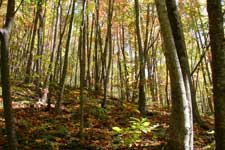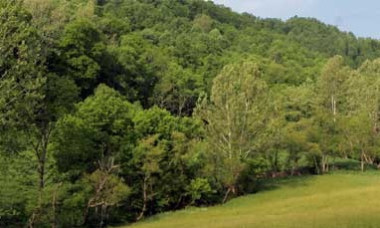Forest-based and forest-related employment is one measure of the social and economic importance of forests. In 2006 in the US, forest product industries employed about 1.2 million people in the wood and paper products, wood furniture, forestry and logging businesses. In Ontario, Canada, about 200,000 people are directly and indirectly employed by forestry.1
Unlike some regions in the world where deforestation is happening at a rapid pace, the US has actually maintained its forestland for the past 100 years. According to the USDA Forest Service, since 1900, forest area in the US has remained statistically within 745 million acres +/-5% with the lowest point in 1920 of 735 million acres. US forest area in 2000 was about 749 million acres.4
In Canada, Forests cover 170 million acres of the Province of Ontario, where the wood products sector harvests 518,000 acres annually. This harvest is only 1/3 of 1% of Ontario’s total forested acres and is three times less than the acreage lost to natural disturbances such as fire, insects and wind. According to the United Nations FAO State of the World’s Forests report, Canada’s deforestation rate is zero. Canada retains 91% of its original forest cover, more than any other country in the world while supporting a large and thriving forest products industry for more than 100 years.5
Harvesting affects nearly 10 million acres in the US annually, or about 1.3% of all forestland. Over half the harvested area is in the South which provides nearly 60% of all the Nation’s forest products annually. While significant, harvesting affects less than 3% of the South’s forests annually. Timber removals have stabilized in the last 50 years meaning that the current volume of wood on forestland available for timber harvesting is 51% higher today than in 1953 – a result of a relatively stable amount of forest available for timber production and a historic pattern of growth exceeding removals. According to the USDA, it is estimated that there are 300 billion trees of at least 1″ diameter alive in the US today.6
Carbon Sequestration
Another benefit of plentiful forests is carbon absorption, or the incorporation of free carbon from the atmosphere into plant tissue. According to the USDA, forested ecosystems in the US currently contain an amount of carbon equivalent to over 165 billion metric tons of CO2, a figure close to 27 times the 5.9 billion tons of CO2 emitted nationally every year through the burning of fossil fuels and similar sources. Live trees and forest soils account for the bulk of forest-based carbon stocks. Forests sequester approximately 650 million metric tons of additional CO2 every year, offsetting close to 11 percent of total US annual carbon emissions. This rate of sequestration has been relatively stable for several decades, reflecting the long-term increases in forest volume.7

1 from the Ontario Forest Industries Association
2 from the U.S.D.A. National Report on Sustainable Forests: 2010, section 6.40
3 from the Ontario Forest Industries Association
4 National Report on Forest Resources and other historic data
5 from the Ontario Forest Industries Association
6 from the U.S.D.A. National Report on Sustainable Forests: 2010, section 2.11-2.13
7 from the U.S.D.A. National Report on Sustainable Forests: 2010, section 5.22






